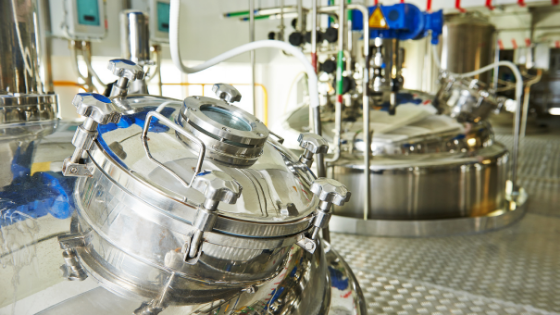
When looking at 304 stainless steel vs 316, it is hard to notice the difference between them. However, when manufacturing with 304 vs 316 stainless steel, the difference can be huge. Keep reading to learn more about the two most popular types of stainless steel.
The high levels of chromium and nickel found in 304 and 316 stainless steel provides them with a strong resistance to heat, abrasion, and corrosion. Not only are they known for their resistance to corrosion, they are also known for their clean appearance and overall cleanliness.
Kloeckner Metals is a full-line stainless steel supplier and service center. Download our stainless steel spec sheet and check what Kloeckner Metals routinely stocks.
The five classes of stainless steel are organized based on their crystalline structure (how their atoms are arranged). Out of the five classes, 304 and 316 stainless steel are in the austenitic grade class. The structure of austenitic grade stainless steels makes them non-magnetic and prevents them from being hardenable by heat treatment.
| Grade | Carbon | Manganese | Silicon | Phosphorus | Sulfur | Chromium | Nickel | Nitrogen |
| 304 | 0.08 | 2 | 0.75 | 0.045 | 0.03 | 18.0/20.0 | 8.0/10.6 | 0.1 |
| Physical Property | Value |
| Melting Point | 1450℃ |
| Density | 8.00 g/cm^3 |
| Thermal Expansion | 17.2 x10^-6/K |
| Modulus of Elasticity | 193 GPa |
| Thermal Conductivity | 16.2 W/m.K |
| Tensile Strength | 500-700 Mpa |
| Elongation A50 mm | 45 Min % |
| Hardness (Brinell) | 215 Max HB |
The medical industry commonly uses 304 SS because it endures the powerful cleaning chemicals without corroding. As one of the few alloys that meets the Food and Drug Administration’s sanitary regulations for food preparation, the food industry often uses 304 SS.
316 contains many similar chemical and mechanical properties as 304 stainless steel. To the naked eye, the two metals look the same. However, the chemical composition of 316, which is made up of 16% chromium, 10% nickel, and 2% molybdenum, is the main difference between 304 and 316 stainless steel.
| Melting point | 1400℃ |
| Density | 8.00 g/cm^3 |
| Modulus of Elasticity | 193 GPa |
| Thermal Expansion | 15.9 x 10^-6 |
| Thermal Conductivity | 16.3 W/m.K |
| Tensile Strength | 400-620 Mpa |
| Elongation A50 mm | 45% min |
| Hardness (Brinell) | 149 max HB |
The addition of Molybdenum in 316 makes it much more corrosion resistant than similar alloys. Due to its superior resistance to corrosion, 316 is one of the staple metals for marine environments. 316 stainless steel is also utilized in hospitals because of its durability and cleanliness.
Fun fact: The Chicago Bean is made from 316 stainless steel!
Heat resistance is an important factor to consider when comparing the different grades of stainless steel. The melting range of 304 is around 50 to 100 degrees Fahrenheit higher than 316. Although the melting range of 304 is higher than 316, they both have good resistance to oxidization in intermittent service up to 870°C (1500℉) and in continuous service at 925°C (1697℉).
What makes 316 more expensive than 304 stainless steel? The increase of nickel content and the addition of molybdenum in 316 makes it more expensive than 304. On average, the price of 316 stainless steel 40% higher than the price of 304 SS.
When comparing 304 stainless steel vs 316, they both have pros and cons to consider when deciding which one to use for different applications. For instance, 316 stainless steel is more resistant than 304 to salt and other corrosives. So, if you are manufacturing a product that will often face exposure to chemicals or a marine environment, 316 is the better choice.
On the other hand, if you are manufacturing a product that does not need strong corrosion resistance, 304 is a practical and economical choice. For many applications, 304 and 316 are actually interchangeable.
Kloeckner Metals is a full-line stainless steel supplier and service center. Kloeckner Metals combines a national footprint with the latest fabrication and processing technologies and most innovative customer service solutions.

Steel base plates are fundamental elements employed in various manufacturing...
Metal fabrication is a critical process that transforms raw metal...
The solar industry has undergone a significant transformation by incorporating...

X
The Kloeckner Metals website uses modern technologies. Unfortunately, your browser doesn't support those technologies.
Download the latest version of one of these browsers to experience the site: